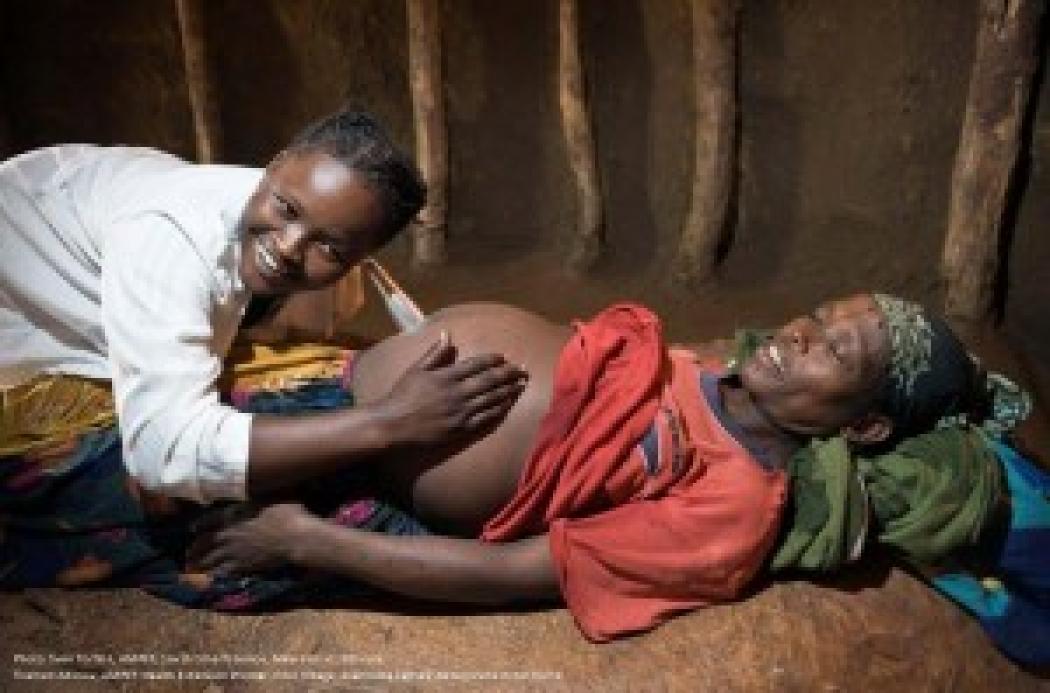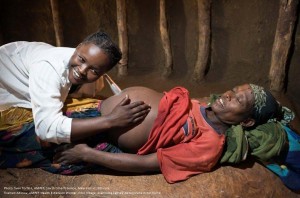How A $300 Investment Saves Lives

By Susan O’Halloran, MPH
If you’ve ever been to the developing world, you know how especially important it is to keep from getting sick or injured. The hospital can be miles away and there is really no easy way to get there. So what happens when a child gets sick, or a woman needs help delivering her baby, or a man is cut with a machete while hunting? Maybe there is a clinic within walking distance. Maybe not.
Who does the community turn to? More and more communities have come to depend on local residents who have been trained as frontline health workers. Frontline health workers are the first point of contact for millions of people who live beyond the reach of hospitals and clinics. Many are community health workers, midwives, and local pharmacists, though they can also include doctors, nurses and other clinicians who serve near the community.
Training a frontline health worker from the local community makes good sense. Once the frontline health worker is trained, they typically stay to care for the community and don’t leave to take work elsewhere. They understand the local attitudes and behaviors and can work closely with their community to educate them about how to achieve optimal health. And, they are a “best buy” for the money. It can cost as little as $300 to train a frontline health worker in crucial lifesaving skills. Countries like Ethiopia and Bangladesh, who invested in training frontline health workers, are cutting mortality rates significantly among vulnerable groups like women, newborns and children under five years old.
How much is a life saved worth? If each frontline health worker trained for $300, saved 10 lives, you could say the cost of saving that life was $30! Yes, this is overly simplified, but you get the point – training frontline health workers is a cost-effective investment and we need MORE frontline health workers trained, retained and supported in developing countries to meet our global health challenges.
How will we make this happen?
- By calling upon the U.S. government to increase the number of trained and supported frontline health workers from 140,000 to 250,000 by 2015.
- By sharing what we learn about how frontline health workers save lives, what it costs, how to continually motivate frontline health workers in their jobs and how to attract new frontline health workers, to name a few topics.
- By forming alliances such as the Frontline Health Workers Coalition to work together with the U.S. government policy makers and administrators, corporations, NGOs and others to set frontline health worker goals in countries where the need is greatest and to measure our progress toward achieving those goals.
The 25+ members of the Frontline Health Workers Coalition will contribute to this weekly blog to tell the story of the frontline health worker – success stories as well as what happens when there is no frontline health worker. We’ll look at how important U.S. policy efforts are to guide programs and we’ll put a name and a face to the frontline health workers responsible for saving lives where the need is greatest. Your comments are always appreciated. You are encouraged and thanked for sharing this blog.
Written by: Susan O’Halloran, MPH. Susan is the Director of the Frontline Health Workers Coalition, a dynamic and influential coalition of 25+ NGOs working together to urge greater and more strategic U.S. investment in frontline health workers in the developing world as the most cost-effective way to save lives and foster a healthier, safer and more prosperous world.

